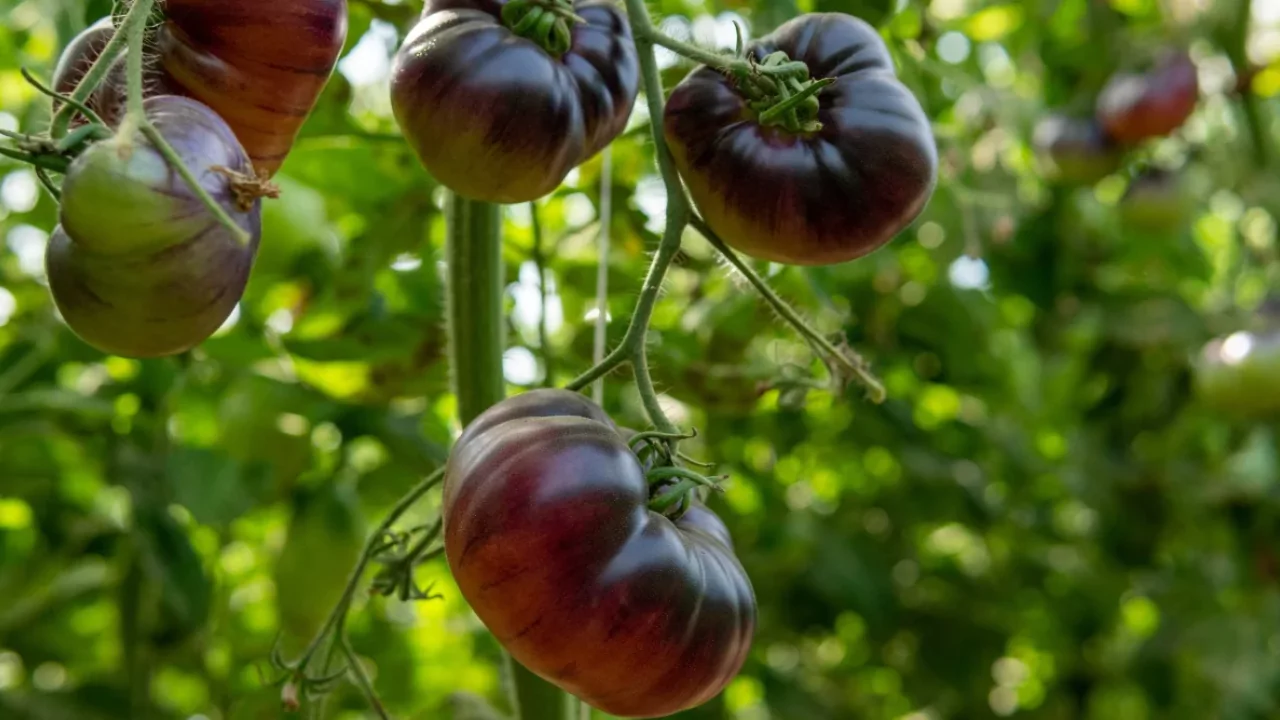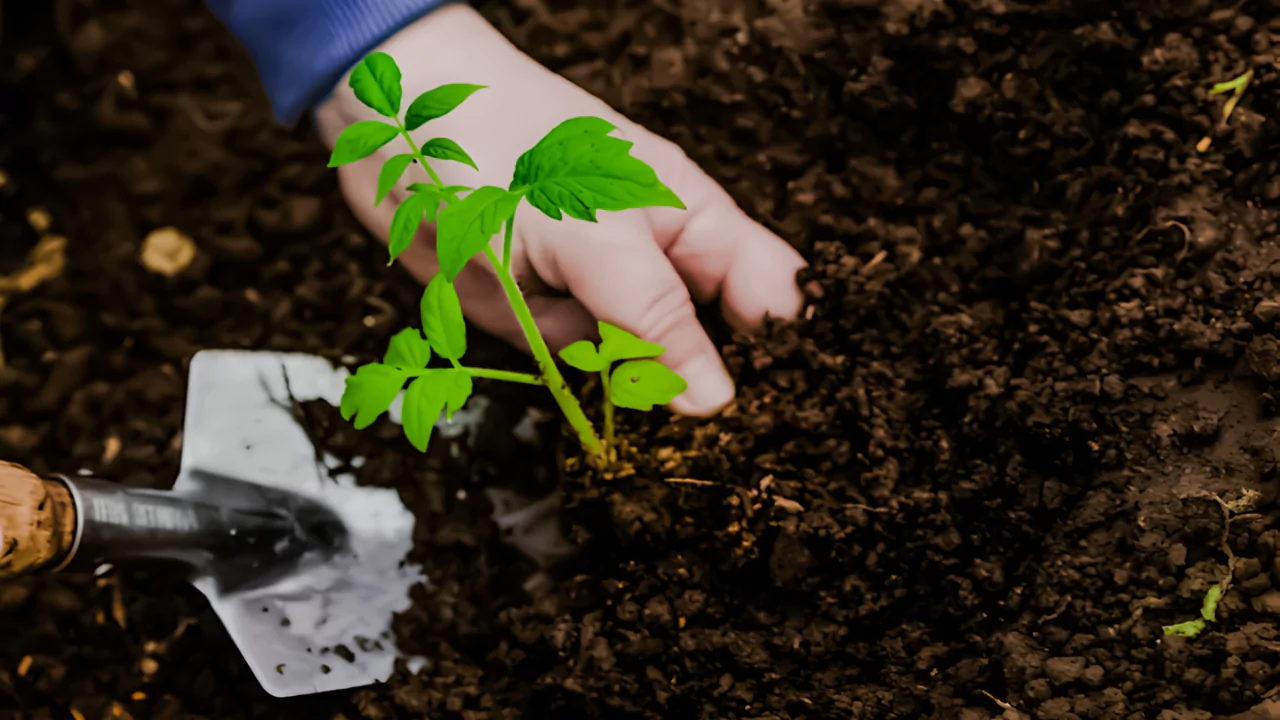
Cherokee Purple is among the most sought-after non-commercial heirloom tomatoes, climbing high on stakes and producing sizable fruit that draws serious gardeners.
Its flavour is often called intensely tomato-like, complemented by a striking dark reddish-purple skin that signals good eating. For many home cooks and small-scale growers, seeing a Cherokee Purple on the counter is almost as pleasing as tasting it.
The lineage re-emerged thanks to John Green of Sevierville, Tennessee, who received seeds from a neighbour, passed them to Craig LeHoullier, and helped keep the variety alive through the Seed Savers Exchange.
Greens scrawled note claimed the strain had been in his community for a century and had come from Cherokee people, giving the tomato its fitting name. NPR even covered the story, adding to the seeds folklore.
Best Soil for Cherokee Purple Tomatoes
Like all tomatoes, Cherokee Purples need rich growing medium to perform well. The earth should remain loose, stay airy, and packed with nutrients down at least six inches, so the deep roots from these tall plants find room.
Starting soil that is slightly high in nitrogen helps early leaf growth, and excess nitrogen will bleed off by harvest-time to encourage fruiting instead. A pH between 6.0 and 6.5 keeps the plant happy; the variety also adapts easily across the major tomato-growing climate zones.

Proper Care of Cherokee Purple Tomato Plants
Seeds should go into the starter mix at least eight weeks before the last spring frost arrives. Cherokee Purple germination is steady but slow, and for the first three or four weeks even good potting soil yields few visible gains. Growers who buy seedlings from a nursery can still protect their investment by keeping them indoors for about a week; that hardening step eases the plants into brighter light and cooler air.
During the delicate phase, young heirlooms are quick to scorch in strong sun or shiver in chilly winds, so shelter them until they gain vigor. Choose a spot that gets morning sun and feels warm to the back of your hand before noon. Work in organic matter until the soil is loose, then double-check the pH- it should read just below neutral. Space each plant a minimum of three feet apart; four feet is even better, because Cherokee Purple spreads as wide as it grows tall.
Expect finished plants to top eight or nine feet, with a sturdy crown of limb and leaf overhead. As each stem reaches eighteen inches, pinch off the suckers that form in the leaf axils, and work horizontally so shoots stay below the main leader. Water deeply once or twice a week, letting surface soil dry between drinks, and every month sprinkle a thin band of compost or balanced organic fertilizer along the row.
If your pre-plant test showed excess nitrogen, switch to the lighter, all-purpose blend that lets phosphorus and potassium do the maturing work. Because fruit on a nine-foot plant can weigh down the top like lead on bailing twine, sturdy support is not optional.
Wire cages rated for extra-large tomatoes will carry most crops, although some gardeners swear by rough, tepee-style frames of bamboo and twine that make harvesting easier. Single wooden stakes may stand until the first blush of color, but history proves they usually fail just when ripeness is within reach.

When to Harvest Cherokee Purple Tomatoes
Cherokee Purple tomatoes typically require about eighty days from transplanting to full maturity, yet, as is common with heirloom types, the fruits seldom ripen all at once. Instead, expect a staggered harvest that may extend over a week or two.
To judge ripeness, look for a large fruit that exhibits a rich, deep purple tint blended with red. Although the shoulders often stay somewhat green, those areas will lighten slightly when the tomato is ready to pick.
Saving Cherokee Purple Tomato Seeds
Saving seeds from Cherokee Purples is straightforward and can be done with minimal equipment. Many gardeners scoop out the seeds and then roast the empty fruit halves as a makeshift stuffed tomato.
After separation, rinse the seeds and lay them out to dry slowly in an airy spot, away from direct sunlight. If properly cured, heirloom seeds stored in a cool, dry container should remain viable for two to three years.
Cherokee Purple Tomato: Pests and Diseases
Cherokee Purple tomatoes show strong resistance to Fusarium wilt and Septoria, two diseases that plague many growers. When given proper care, these heirloom plants shrug off nearly every other illness and fend off most pests. In North America, their biggest foe remains the tobacco mosaic virus, and once that virus appears, there is no cure.
If you see telltale curled leaves that resemble wilting, isolate the suspect plant immediately and discard it so the virus cant spread. Another trouble spot is blossom-end rot, which can be prevented through steady watering and balanced calcium levels in the soil.
Elevating the fruit off the ground guards against many blight strains. Birds and grasshoppers usually ignore the unusual purple hue, yet chewing pests like tomato hornworms and similar caterpillars can still wreak havoc. Act quickly against aphids when they first arrive, and the crop should stay healthy through the growing season.
How to Prepare Cherokee Purple Tomatoes
Cherokee Purple tomatoes lend themselves to about a thousand serving ideas. For every home grower who harvests a few, a neighbor appears with another notch of recipe inspiration. They shine raw, stacked on a burger, drift lightly dried in a salad, or layer quietly on a pizza. Few bother to pickle or boil them down, because the fruits brightness and warm color deserve a starring role, not an afterthought.
Tips for Growing Cherokee Purple Tomatoes
This heirloom tomato thrives in rich soil and full sun, so start it in the warmest corner of the garden. Moisty roots keep the plant happy, yet think early about good airflow to fend off late blight. Expect vigorous vines, and dont skimp on support; cages or sturdy stakes will tame the weight of the fruit. With steady care, the unusual, dusky-red globes appear in mid-summer and taste way better than most store-bought types.